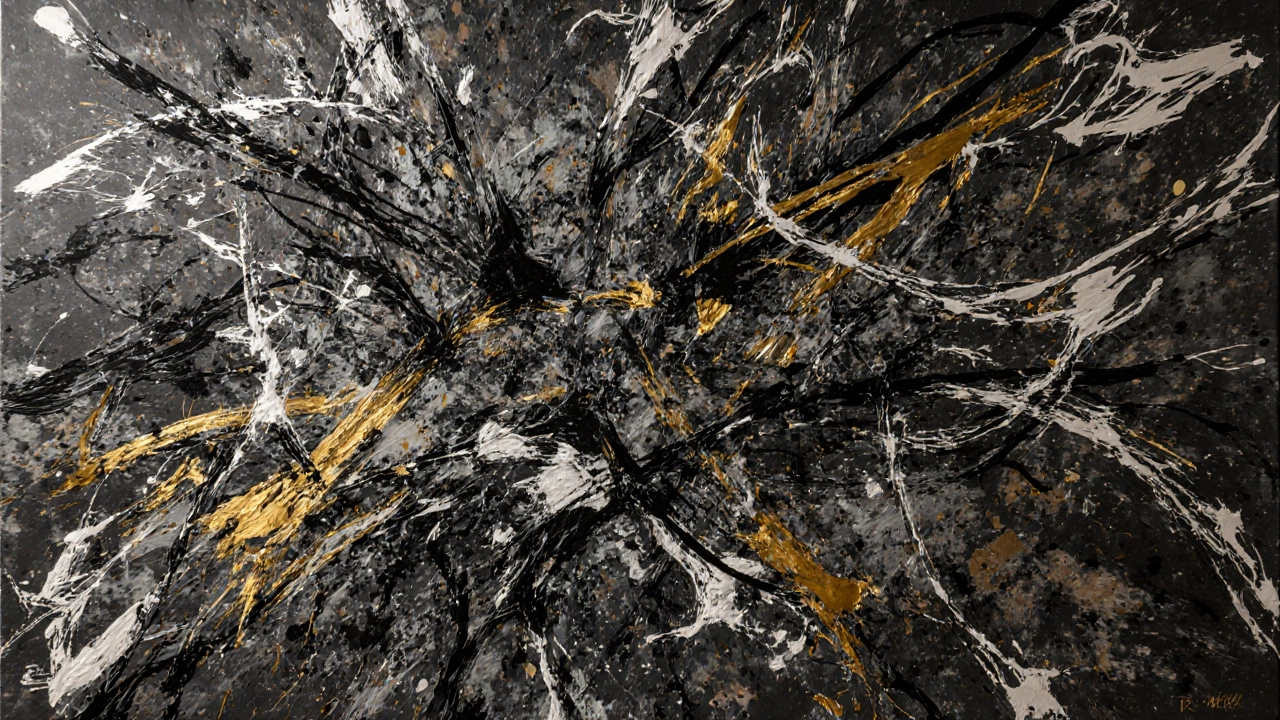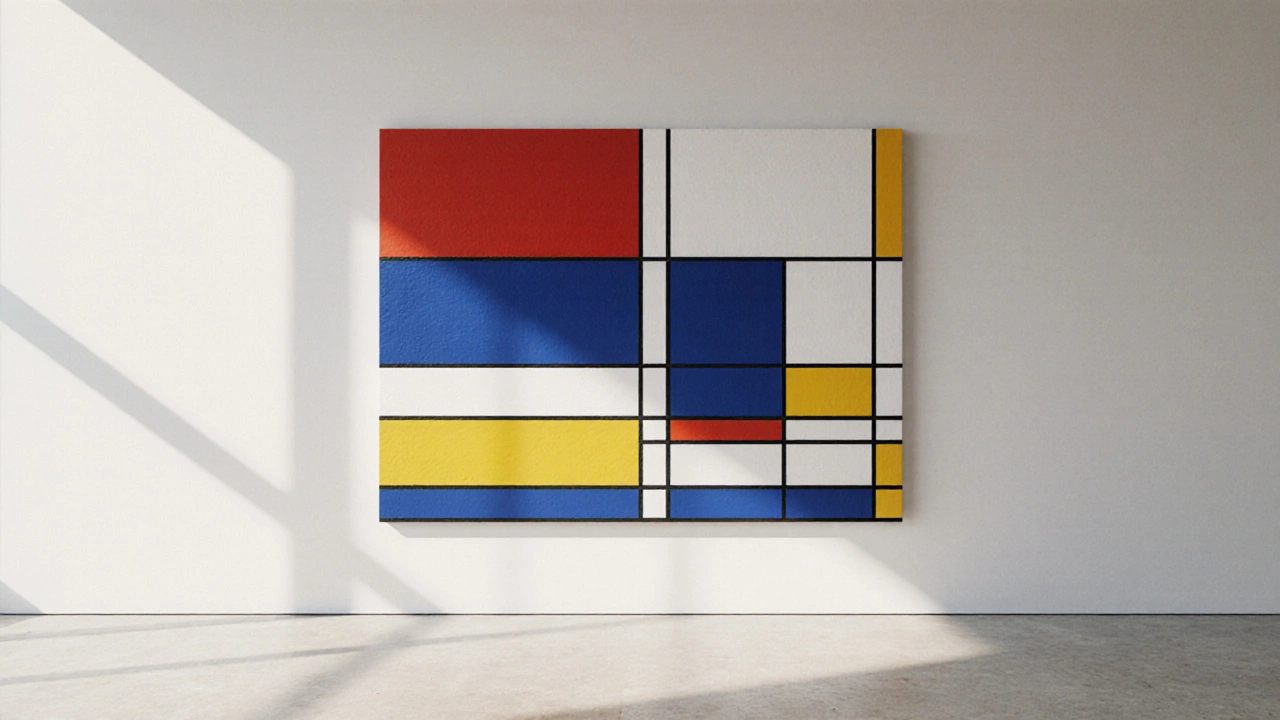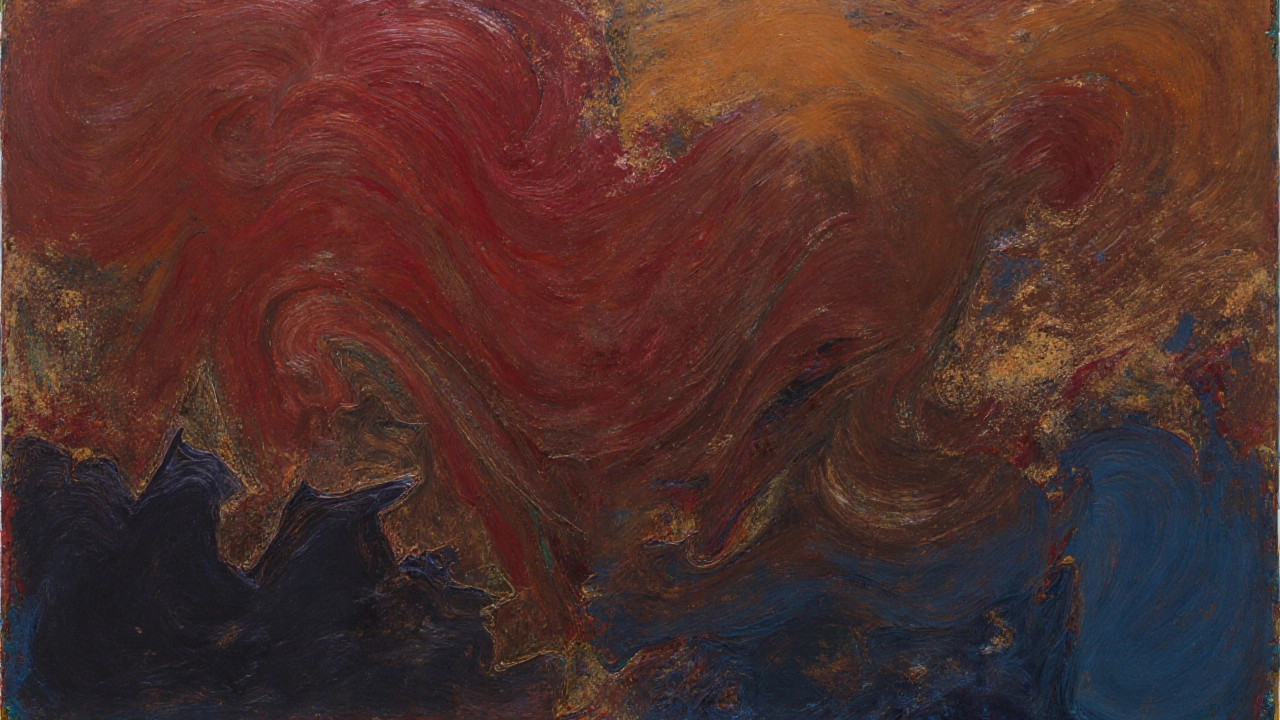Abstract Art Checker
How it works
Analyze your description of an artwork to see if it meets key characteristics of abstract art. Based on the principles discussed in the article about what defines abstract art.
Abstract Art Analysis
Key Characteristics Met:
Abstract art doesn’t show you a tree, a face, or a landscape. It doesn’t try to copy the world you see. Instead, it asks you to feel something-color, movement, tension, silence-without needing a clear subject. So what actually makes art abstract? It’s not just about shapes or wild brushstrokes. It’s about intention, removal, and the space between what’s there and what’s felt.
It’s Not About What You See, But What You Feel
Many people think abstract art is random. That it’s just splatters of paint or messy lines. But that’s a misunderstanding. Abstract art removes recognizable forms to focus on emotion, rhythm, or structure. It’s like music without lyrics-you still feel the mood, even if you can’t name the song.
Wassily Kandinsky, one of the first artists to fully embrace abstraction in the early 1900s, said he wanted to paint the soul, not the scenery. His work Composition VII (1913) looks chaotic at first glance-swirls of color, jagged lines, floating shapes. But it wasn’t random. He built it like a symphony, layering tones and forms to create emotional harmony. That’s the core of abstract art: structure without representation.
Breaking Away from Representation
For centuries, art was about showing something real: a portrait, a battle, a still life. Abstract art broke that rule. It didn’t just simplify reality-it left it behind. The shift didn’t happen overnight. It started with Impressionists like Monet, who blurred edges to capture light. Then came Cubists like Picasso, who fractured objects into angles. By the 1910s, artists like Kandinsky and Hilma af Klint stopped trying to depict anything at all.
Take af Klint’s The Ten Largest (1907). These huge paintings use spirals, circles, and bold colors to suggest spiritual energy. No human figures. No trees. No buildings. Just forms that feel alive. She wasn’t painting what she saw-she was painting what she sensed. That’s the key difference: representation vs. expression.
Color, Shape, and Line as the Language
When there’s no object to hold onto, what does abstract art use instead? Color. Shape. Line. These become the vocabulary.
Mark Rothko’s large, soft-edged rectangles of color-like No. 61 (Rust and Blue)-don’t show anything. But they pull you in. The way the red bleeds into the rust, the blue hovering like a sigh-it creates a quiet, almost sacred space. People have cried in front of his paintings. Not because they’re looking at a scene, but because the color itself carries weight.
Meanwhile, Piet Mondrian reduced everything to horizontal and vertical lines, primary colors, and white space. His Composition with Red, Blue, and Yellow (1930) looks simple. But each line is placed with mathematical precision. The balance isn’t accidental-it’s a visual rhythm. Abstract art isn’t chaos. It’s controlled energy.

Techniques That Build Abstraction
There’s no single way to make abstract art. But some methods appear again and again:
- Layering: Painting over and over, letting earlier marks show through-like in the work of Anselm Kiefer.
- Gesture: Fast, physical brushwork that captures motion-think Jackson Pollock’s drips.
- Reduction: Stripping away detail until only essence remains-seen in Agnes Martin’s faint pencil lines.
- Texture: Using thick paint, sand, or fabric to create tactile surfaces-like in the work of Jean Dubuffet.
These aren’t just tricks. They’re tools to remove the literal and invite the emotional. A drip isn’t just paint falling-it’s time, effort, chaos contained. A smudge isn’t a mistake-it’s memory.
Why Does It Feel So Personal?
Abstract art doesn’t tell you what to think. It lets you bring your own story. One person sees a storm in a Jackson Pollock painting. Another sees a galaxy. Both are right. That’s the power of abstraction: it’s open-ended.
Compare it to a poem. A poem doesn’t say, “I’m sad.” It says, “The window is cracked, and the wind hums through it.” You fill in the feeling. Abstract art works the same way. It gives you fragments-color, texture, rhythm-and lets your mind connect them.
That’s also why it’s often misunderstood. If you’re used to art that shows you something familiar, abstract art can feel empty. But it’s not empty. It’s waiting.
What Abstract Art Is Not
It’s not just “anything goes.” You can’t slap paint on canvas and call it abstract. True abstraction has intention. It has structure. It has history.
It’s also not decorative. A colorful wallpaper pattern isn’t abstract art. It’s ornament. Abstract art demands engagement. It asks you to sit with it. To wonder. To feel uneasy. To feel calm. To question why you feel anything at all.
And it’s not about skill in the traditional sense. You don’t need to draw a perfect face to make abstract art. But you do need to understand how color affects emotion. How shape creates tension. How space breathes. That’s a different kind of skill-one that’s harder to teach.

Modern Abstract Art Today
Today, abstract art isn’t just in galleries. It’s in digital art, fashion, even architecture. Artists like Julie Mehretu build layered, complex compositions using maps, architectural plans, and digital marks. Her work Stadia II (2004) looks like a storm of lines and color-but it’s built from real data: sports arenas, protest routes, city grids.
And it’s not just Western artists. Japanese artist Kazuo Shiraga used his feet to smear paint on canvas, turning movement into emotion. Chinese artist Zeng Fanzhi blends abstract expression with traditional ink techniques. Abstraction isn’t a style-it’s a language spoken across cultures.
How to Recognize Abstract Art
Ask yourself these questions:
- Is there a clear, recognizable object? If yes, it’s not abstract.
- Do the colors, shapes, or lines feel intentional-not random?
- Does the piece make you feel something without showing you something?
- Could this work be a visual version of a piece of music?
If you answer yes to the last three, you’re looking at abstract art.
Final Thought: Abstraction Is a Mirror
Abstract art doesn’t show you the world. It shows you how you see it. The same painting can feel chaotic to one person and peaceful to another. That’s not a flaw-it’s the point. It reflects your inner state back at you.
So what defines abstract art? It’s the courage to let go of the literal. To trust that emotion doesn’t need a face. That color can speak louder than words. That silence, in paint, can be louder than noise.
Can abstract art be learned, or is it just instinct?
Abstract art can be learned, but not like drawing a portrait. You learn by studying how color and form affect emotion, not by copying shapes. Artists like Mark Rothko spent years experimenting with layering and scale before finding their voice. It’s less about technique and more about sensitivity-how to make a red feel heavy, or a line feel lonely. Practice helps, but so does quiet observation.
Is abstract art just for rich people or art elites?
No. Abstract art was never meant to be exclusive. Kandinsky painted for anyone who felt something. Today, you can find powerful abstract work in small galleries, community centers, or even online. The price tag on a Rothko doesn’t define the art-it defines the market. The feeling? That’s free. Anyone can stand in front of an abstract piece and feel moved. That’s the point.
Why do some abstract paintings sell for millions?
It’s about history, rarity, and cultural impact. A Rothko sells for millions not just because it’s pretty-it’s because he helped redefine what art could be. His work changed the course of modern painting. Collectors aren’t just buying paint-they’re buying a moment in art history. That’s true for Pollock, Kandinsky, or Yayoi Kusama. It’s not about the canvas. It’s about the idea it carries.
Can a child’s drawing be considered abstract art?
A child’s drawing might look abstract, but it’s not the same thing. Abstract art comes from intentional choices-color theory, composition, historical context. A child’s scribble is spontaneous expression. Abstract art is expression shaped by awareness. That doesn’t mean a child can’t create something powerful. But calling it abstract art ignores the history, intent, and discipline behind the movement.
Is abstract art still relevant today?
More than ever. In a world full of images-ads, memes, filters-abstract art offers something rare: space to breathe. It doesn’t sell you anything. It doesn’t explain itself. It just is. Artists today use abstraction to talk about climate, identity, and digital overload. Julie Mehretu, Anselm Kiefer, and others prove it’s not a relic-it’s a living language.

